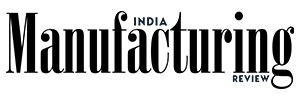
Meeting Global Paint Standards: VOC Rules & Environmental Norms
Kuldip Raina, Managing Director and CEO of Shalimar Paints, in a conversation with India Manufacturing Review, shared his views on developing regulatory governance and enhance profitability by addressing evolving customer needs and preferences in sustainable and premium paints. To enhance capital and improve productivity, he mentioned the utilization of new technologies, including nanotechnology, which will enhance quality and the production process. He also noted growth opportunities in the urban and rural markets of India.
Kuldip Raina is leading the growth and transformation of Shalimar Paints through innovation, operational excellence, and strategic vision. With more than three decades of leadership experience with leading organizations, he is establishing the brand as a sustainable, tech-forward, and consumer-centric leader.
How do you prioritize investments in compliance without impacting margins in general paint manufacturing?
When advanced technologies are offered to consumers, it achieves a certain level of premium. However, the recent transition from solvent-based to water-based products and from low-end to high-end segments, the changing product mix effectively alleviates other profitability concerns that could arise from regulatory changes.
Are there regulatory gaps in certain regions that you leverage strategically for competitive advantage?
In India, consumers located in southern and western regions usually prefer advanced and premium products more than consumers in other regions. However, as a pan-India company, it is impractical to create separate product lines for various regions; product launches are uniform across the country. Nevertheless, a noticeable trend indicates that consumers in the West and South demonstrate a greater inclination towards high-end products compared to those in the East and North.
How do you balance production scale with environmental compliance while maintaining profitability?
In general, all emulsions and water-based product categories provide comparatively better margins. Therefore, by increasing the share of emulsions and water-based products, it becomes possible to offset the additional costs associated with meeting regulatory or waste-compliance requirements. In short, although the margin is lower, the higher margins associated with these products will help to maintain a balanced and profitable portfolio in the presence of these additional compliance costs.
How does consumer demand for low-VOC or sustainable paints influence your revenue strategy?
Within the Indian context, this trend exists more strongly in the metro cities and tier-1 regions. Affordability is the major consideration in tier-2 and tier-3 markets, as consumers in those markets see paint as mostly as a basic product. However, in metropolitan areas, customers are aware and selective on what they choose. Unlike earlier times when living spaces were more open, modern homes now tend to have enclosed environments, thus consumers are becoming increasingly focused on interior wall protection. As a result of this changing consumer focus, paints are being demanded to have new features such as low VOC content, minimal fumes, washability, and self-cleaning properties. These changes in demand for paint can simply be seen as evidence of evolving currency of awareness and expectations by urban consumers.
Which markets offer the highest growth potential for compliant and eco-friendly paints, and why?
The advancement and eco-friendly paint products are presently emerging in metro and tier-1 and tier-2 cities, while it has not yet become a widespread trend in the interior regions of the country. However, in urban centers, many builders and new projects are strictly following sustainability and compliance regulations. To address these new expectations the company has a product portfolio that addresses similar needs and is developing new product lines to address this growing segment.
How can companies ensure compliance initiatives that align with overall business strategy and profit goals?
India is an incredibly straightforward market, and consumption of paint is only one-tenth the world average. This indicates enormous potential, especially in rural markets that remain underdeveloped and under-represented. Since about two-thirds of the Indian population live in villages, these regions represent emerging growth opportunities. Although the demand for technology-rich products continues to be concentrated mainly in tier-1, tier-2 cities, and metros, rural areas have emerging demand from consumers upgrading from traditional lime-based coatings to distempers and emulsions.
The Indian market has significant potential. However, it varies from consumer segment to consumer segment. The tier-1 consumer segments tend to have higher expectations in terms of low-VOC and premium emulsions. The rural market only dips into lower-end product categories. This illustrates the varied nature of Indian consumers. But given the ongoing trends in the paint sector, India has feasible growth prospects and is well-positioned for strong growth over the next decade.
In terms of industry benchmarking, which competitors are leading in VOC compliance, and what lessons can industry players draw from them?
In today's market, nearly all major brands offer low VOC products. The only potential non-compliant products are likely from the unorganized sector. The shift towards low VOC formulations began nearly a decade ago, and although India does not yet have comprehensive regulations, these practices have largely been self-imposed by the paint industry. Today, most organized players have incorporated low VOC modifications across their product lines.
How do you see environmental compliance shaping the paint industry’s profitability and growth over the next 5–10 years?
A distinct shift is taking place from unorganized to organized segments, from distempers to emulsions and from standard emulsions to premium emulsions to retain margins. This transition is expected to support profitability in the future. While environmental challenges and regulatory restrictions may have a marginal impact on company, the gradual improvement in the product mix over time is likely to offset the additional costs arising from these regulations.
Do you want to share some insights regarding paint manufacturing to our readers?
In the paint industry, emerging technologies such as nanotechnology and smart coatings are expected to play a vital role in the near future. These technologies are becoming increasingly integrated, which fall in line with current consumer preferences and provide real benefits including durability, improved sheen, surface protection, and longer product life.
Nanotechnology is well-recognized for providing functional benefits, and future product launches should heavily emphasize improved product attributes and function. Over the next four to five years, the industry is expected to witness advance manufacturing significantly due to the increased use of both artificial intelligence and advanced technologies. These improvements contributes to improved sheen, better finishes, more vivid colors, optimized production cycle times, and more robust, error-free formulations often called "first-right formulations". These practices will benefit consumers by delivering higher-quality, more reliable paint products.

.jpg)